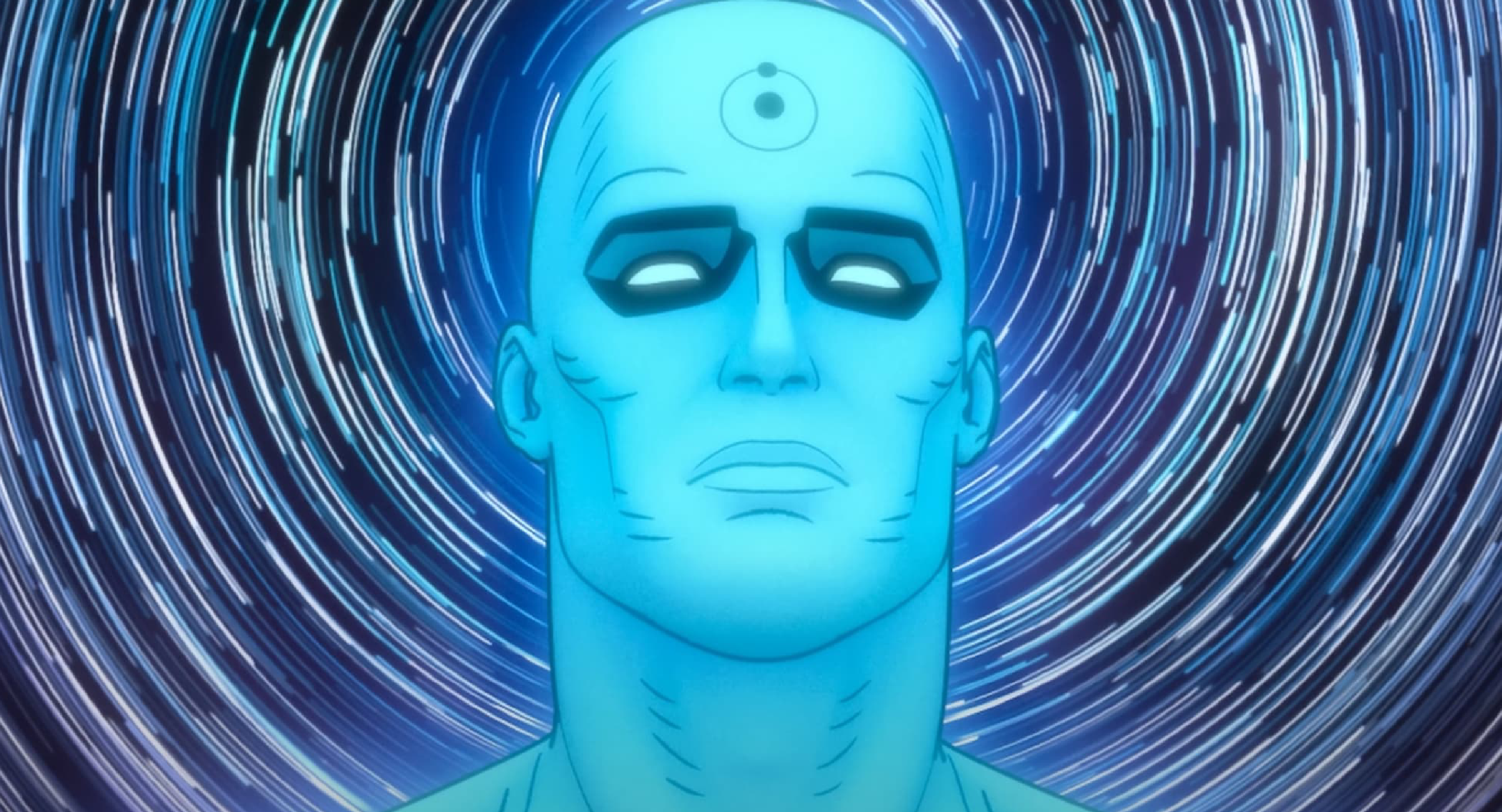Watchmen: Chapter I – Film Review
Published August 13, 2024

Watchmen: Chapter I is a bold and ambitious animated superhero drama that offers a faithful adaptation of the beloved graphic novel by Alan Moore and Dave Gibbons. Directed by Brandon Vietti and penned by J. Michael Straczynski, the film sets the stage for a sprawling narrative that delves deep into the psychology of its characters and the morally ambiguous world they inhabit. While the film succeeds in capturing the essence of the source material, it falls short in certain areas, leaving viewers with a mix of admiration and longing for more.
One of the standout features of Watchmen: Chapter I is its striking visual style. The animation is a hybrid of traditional 2D and modern techniques, which gives the film a unique aesthetic that evokes the gritty, noir atmosphere of the graphic novel. The color palette is dominated by dark hues, with occasional bursts of vibrant color that accentuate the film’s most intense moments. The attention to detail in the character designs and environments is commendable, as the animators have clearly taken great care to replicate the iconic imagery of the original comic.
However, the animation quality is inconsistent at times. While certain sequences, such as the opening fight scene with The Comedian, are fluid and dynamic, other scenes suffer from stiff character movements and awkward transitions. This inconsistency detracts from the overall experience, making some moments feel less impactful than they should be. Additionally, the film occasionally relies too heavily on slow-motion effects, which, while visually striking, can disrupt the pacing.
Watchmen: Chapter I covers the first portion of the original graphic novel, focusing primarily on the murder of The Comedian and Rorschach’s investigation into the crime. The film admirably condenses the complex narrative into a manageable runtime without losing the intricacies of the plot. J. Michael Straczynski’s script is faithful to the source material, capturing the dark, cynical tone that defines the Watchmen universe.
The film’s structure is episodic, with each chapter focusing on a different character or event, which helps to maintain the story’s complexity. Rorschach, voiced with grim determination by Titus Welliver, serves as the central figure, and his investigation acts as the narrative thread that ties the various plotlines together. The film effectively conveys Rorschach’s paranoia and uncompromising moral code, making him both a compelling protagonist and an unsettling presence.
However, the film’s faithfulness to the source material is also one of its weaknesses. The dense, layered narrative can feel overwhelming for viewers who are not familiar with the graphic novel. The film assumes a certain level of knowledge, and as a result, some of the more subtle plot points and character motivations may be lost on newcomers. Additionally, the pacing can be uneven, with certain scenes dragging on while others feel rushed. This uneven pacing is particularly evident in the film’s middle act, where the focus shifts between characters in a way that can feel disjointed.
The voice cast of Watchmen: Chapter I delivers strong performances that bring the complex characters to life. Matthew Rhys as Dan Dreiberg / Nite Owl imbues his character with a sense of vulnerability and nostalgia for a bygone era of heroism. Katee Sackhoff’s Laurie Juspeczyk / Silk Spectre is equally compelling, portraying Laurie’s inner conflict and disillusionment with both her past and present. Sackhoff’s performance adds depth to Laurie, making her more than just a love interest or sidekick.
Titus Welliver’s Rorschach is the standout performance, capturing the character’s intensity and moral rigidity with a gravelly voice that perfectly suits the vigilante’s grim outlook. Welliver’s portrayal ensures that Rorschach remains a figure of both fascination and fear, maintaining the character’s status as one of the most memorable in the Watchmen universe.
Troy Baker as Adrian Veidt / Ozymandias delivers a nuanced performance that hints at the character’s hidden depths and motivations. While Veidt’s role in this first chapter is relatively minor, Baker’s performance lays the groundwork for what is sure to be a more prominent role in the later installments.
One of the strengths of the film is its exploration of the themes that made the original graphic novel a classic. The film delves into the psychological toll of vigilantism, the corrupting influence of power, and the ethical dilemmas that arise in a world where the line between hero and villain is blurred. These themes are woven into the narrative in a way that challenges the viewer to question their own beliefs about justice, morality, and the role of superheroes in society.
The film also succeeds in capturing the bleak, oppressive atmosphere of the Watchmen universe. The alternate 1985 is a world on the brink of nuclear war, and this sense of impending doom permeates every scene. The score, composed of moody, atmospheric music, enhances this sense of dread and tension, creating an immersive experience that draws the viewer into the story’s dark world.
Watchmen: Chapter I is a visually striking and thematically rich adaptation that will appeal to fans of the original graphic novel. The film’s strengths lie in its faithful recreation of the source material’s tone, its strong voice performances, and its exploration of complex themes. However, the film’s inconsistent animation quality, uneven pacing, and dense narrative may prove challenging for viewers who are not already familiar with the Watchmen universe.
